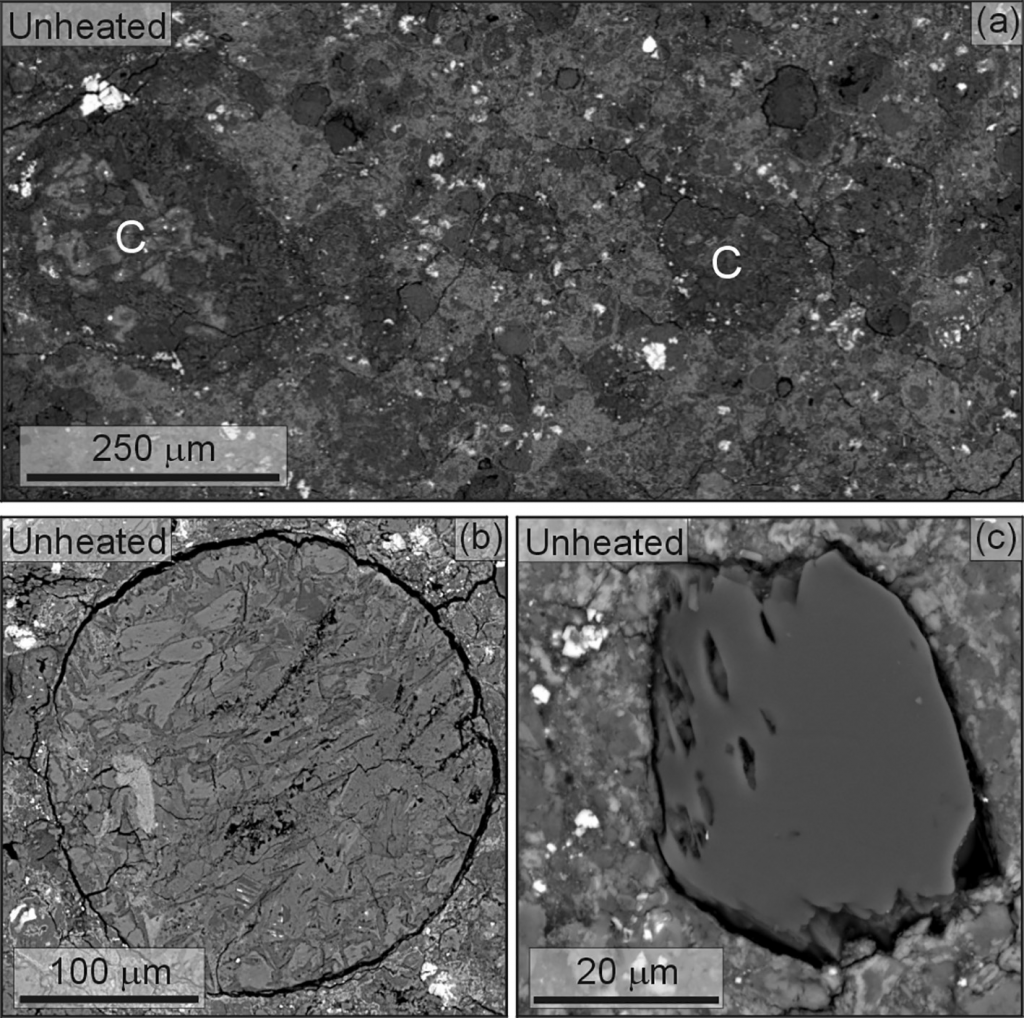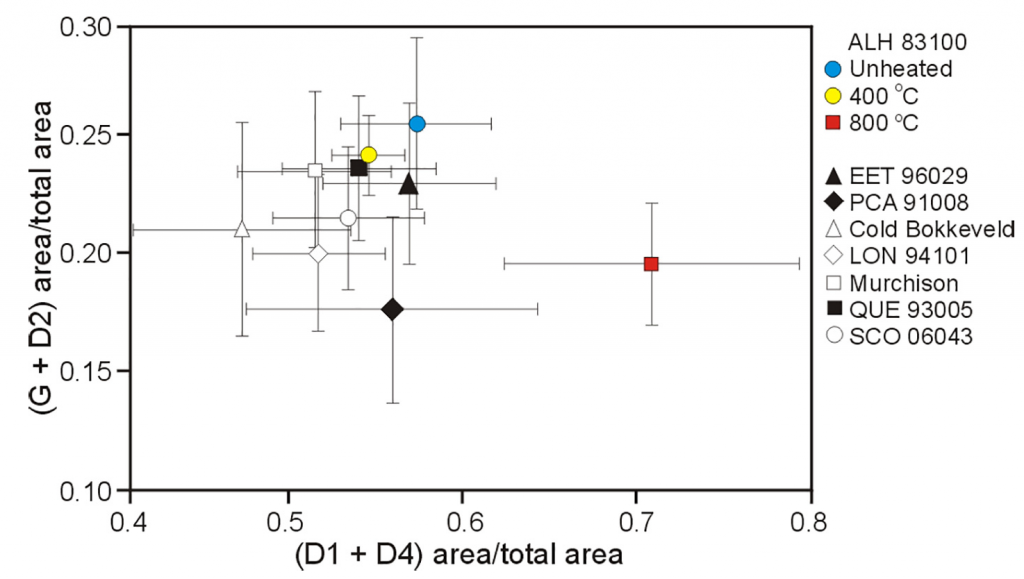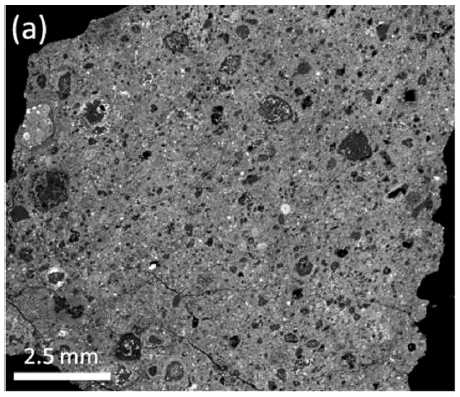
This paper is available as an Open Access article via the journal.
This research paper continues the work of Paula Lindgren, who I worked with earlier when looking at a suite of meteorites. In this paper, a single carbonaceous chondrite meteorite was heated in the laboratory to simulate the heating that took place during the life of a meteorite. A sample was studied using a series of different techniques, including scanning electron microscopy, Raman spectroscopy, infra-red spectroscopy, oxygen isotopic analysis and X-ray diffraction. It was then heated to 400 °C and 800 °C and studied again. We found that the minerals, isotopes and organic matter all changed with heating. Sometimes 400 °C was enough to make a change, sometimes no change was observed until 800 °C.

These changes can be used to work out the thermal history of meteorites collected on Earth, and even for asteroids sampled in space!
